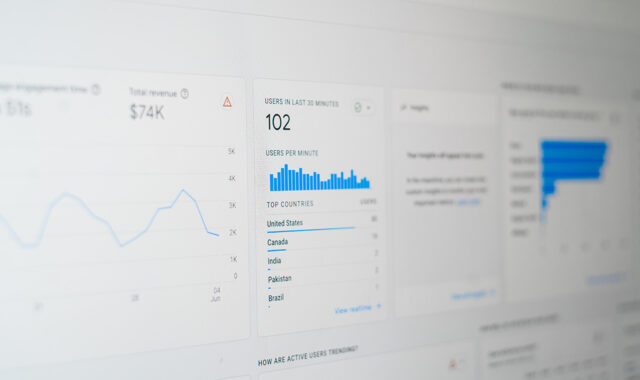If you’re still unsure about where to start, we can help.
With our free tips and guidance, you can build a better digital marketing setup. But if you don’t have the time or resources to manage it all on your own, we can support you. Get in touch to find out how.
‘Technical SEO’ involves the technical adjustments you make to your website to make it crawlable (open to data collection), indexable (open to search engine grouping), and deliverable by search engines to their users.
Think of it as you improving your home before putting it up for sale. Without doing the initial work, no one will show interest or consider buying your house. The same thing happens with technical SEO.
This time, your organic traffic (natural visits), paid traffic, brand image, and revenue are at stake, so you don’t want to take any chances.
So, where do you begin? Below is a roadmap to follow.

1. Get your site structure right
Your site structure is how a site is built. You can imagine it as a building foundation. It’s where each page on your site exists and how they connect.
A complicated architecture means that search engine crawlers (which are automated bots called spiders) and users might lose their way and miss some important pages.
What you want to do is build a flat hierarchical site structure. This type of structure involves a broad page – a parent page that’s linked to subpages. As such, sites with this structure have a short, hierarchical URL as you’ll see below:

2. Create an XML sitemap
Now, an XML sitemap is like a blueprint. It tells search engine crawlers the following things about your page:
- Where to find each one.
- What a page is about.
- Its priority on the site.
- When it was last modified.
- How often it’s updated.
For this reason, site mapping remains one of the most important channels for search engines to discover URLs on a website.
You can use Google Search Console to check if your XML sitemap matches your ideal site structure and update it if it doesn’t.


Support Services
Explore our services to see how we can support you.
We work with clients of all sizes, ambitions, and expectations, and with budgets that start from as little as £150pm to over £1.5m each year. Explore our simple-to-understand packages that take the pressure off, so that you can focus on what you do best.
3. Use SSL on your website
Next on your list is your site security. Are visitors’ interactions with your website encrypted and secured? SSL certification is the way to ensure this. In 2014, Google took a bold step in making SSL an important SEO ranking factor.
You can check if your website already has SSL installed by looking at your URL. Does your URL start with https:// or http://?
If the answer is the former, you’re secured. But if it’s the latter, you’ll have to secure your site. You can do this by installing an SSL certificate.
4. Tackle your page loading issues
How will people buy from you or know the value of your page if it takes forever to load or doesn’t load at all? This is why it’s vital that you check how fast your pages load and make sure loading time isn’t affecting any of the following factors:
- How many people visit your pages.
- How many people interact with your call to action.
- Your site’s growth on search engines’ SERP.
- Your brand image.
- Your revenue.
Slow loading pages will put your visitors off. Those that don’t load at all will give visitors the impression your site isn’t well maintained, which will reflect on your business. In today’s fast-paced world, visitors won’t hesitate to click away and take their business somewhere else. Here are some key steps to ensure this scenario never materialises!
- Check for 404 and 301 errors.
- Use the CSS stylesheet.
- Use a fast DNS provider.
- Reduce your site code.
- Compress your page weight.
- Reduce HTTP requests to what’s necessary.
- Use a better hosting service.
5. Make your site mobile-friendly
Did you know that Google now prioritises responsive websites over non-responsive ones? It’s no surprise, considering 90% of people online access the internet through smartphones. So it’s critical to get your website mobile-friendly ASAP. Here’s what you need to start doing:
- Use mobile responsive themes and templates on your site.
- Reduce your image and CSS weight.
- Use fonts that are readable on all screen types.
- Remove flash plugins if you have them on your site.
- Enable AMP.
Getting the technical nitty-gritty details sorted on your site may seem time-consuming, but all the effort will pay off in the long run. We hope this blog has helped to demystify the process somewhat. Check out our blogs for more SEO 101s from Adhsare.

Get a free website health-check.
Find out if your website is depriving you of visitors. Request our free website health-check to identify common issues with speed, user experience, and performance. We’ll deliver this in a clear report along with some basic recommendations and quick fixes.
Learn more about health-checks
Frequently asked questions
-
A messy site structure will confuse them and lead to higher bounce rates and indexing problems. Here is how you ensure that your site has the best structure.
-
Given that at least 61% of your website viewers, are mobile users, it is vital that your website looks pleasant on your mobile screens. So, here is how you ensure your website is optimised for mobile.
-
Sure! Here, we’ve listed 3 reasons why the speed of your website is more crucial than ever, and an action point to help you address your site speed issues.
Start a Conversation
Request a call-back to see how we can support your digital growth.













